SLALOM - STARTLINE
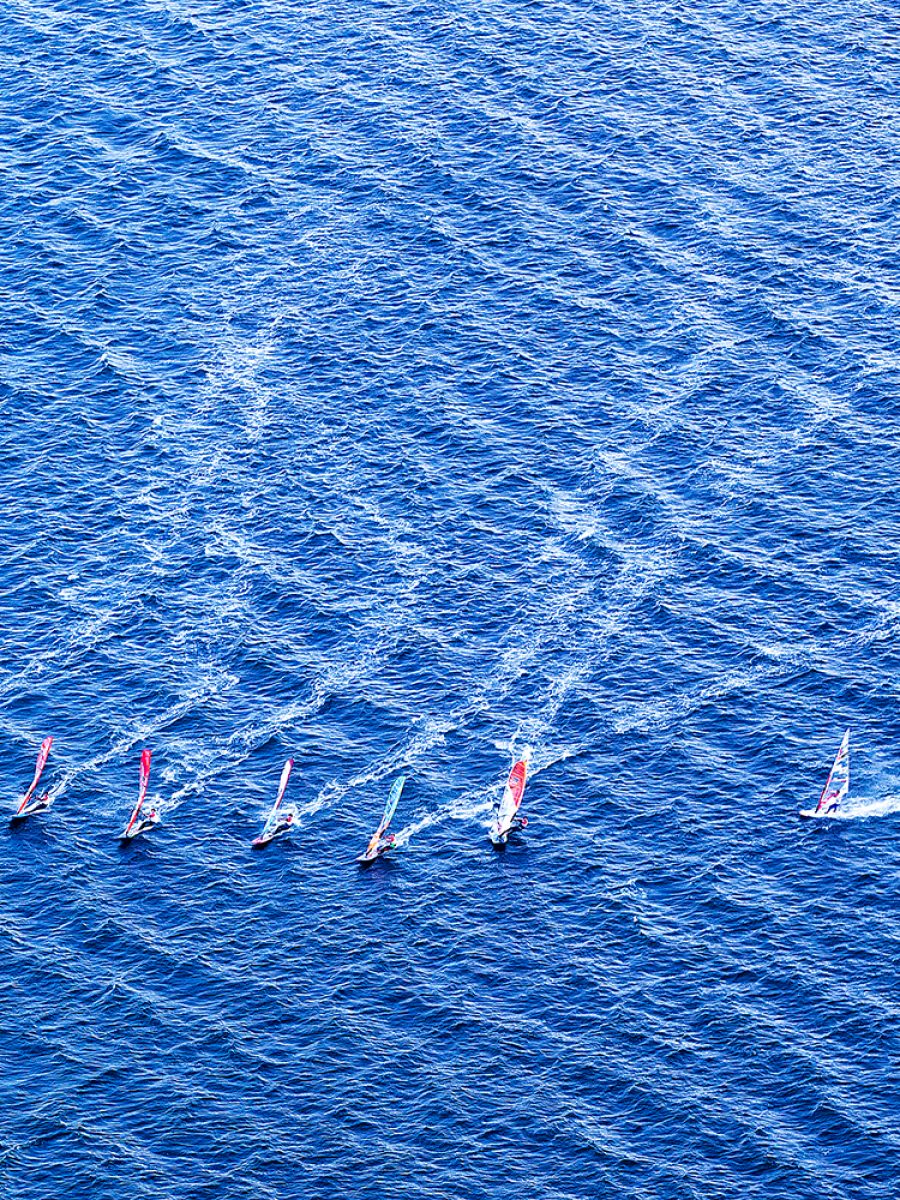
The start line of any slalom race is where podiums can be decided in the blink of an eye. Getting that holeshot into the first reach is a vital advantage but no sailor wants to be over early. It’s a fine line that demands skill, judgement and a lucky roll of the dice. If you want to know how to stack the odds in your favour, read on as some of the world’s best racers give their advice on slalom starts.
Words Matteo Iachino, Ross Williams, Kurosh Kiani, Antoine Albeau, Pierre Mortefon And John Skye // Photos John Carter
Originally published within the January February ’18 edition.
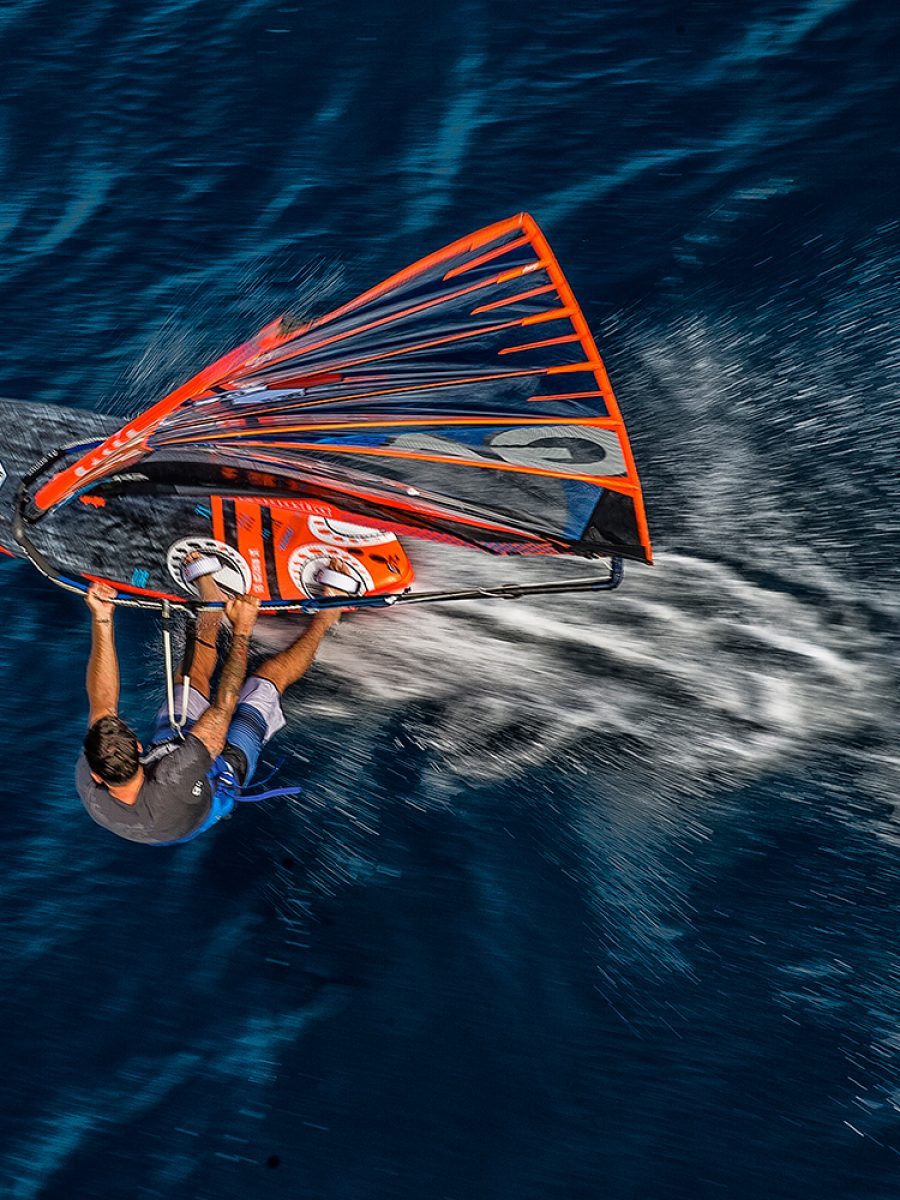
ROSS WILLIAMS
My best advice is repetition and practice. The more starts you do the more comfortable you become. You will be become better at gauging where you are in relation to other riders and how close to the line you are, where you can accelerate and how to look at your line to the first mark. Also you will figure out what end of the start line to use. So for me practice is the key. If you try ten starts a day that will help you dramatically. Use a watch that you are familiar with and have it on your front arm not on your wrist. You need to be able to quickly glance at your watch and know the exact seconds. Before I start my final run, during the last minute, I look at my watch and then keep glancing at it right down to 18 seconds. Then I am almost looking at the line and the other riders. Right at the last few seconds I will glance again just to check I am not too early. A small start line or a biased line can pack people down. If you are confident in your speed then maybe you can avoid the pack. There are different little tricks for every setup. An even start line is probably the most difficult. Everyone can read it and everybody is on it and we all start together in a close pack! Starts can be so tough. When you are coming to the line and the wind is light, you can be in the position where you want to be and then get hustled. Because there is not enough wind to manoeuvre into a new position you can get pigeon holed where you are forced to start in a bad place. That happened to me in Korea, I did not get a good start because I was cautious. It was not a terrible start but together with mediocre rounding of the buoys I was out in the first heat! A few of the guys take more risks than others, especially towards the final. It depends how confident guys are with their speed. You have to calculate who is in your heat, how much is at stake and size yourself up mentally against your opponents.
“ You have to calculate who is in your heat, how much is at stake and size yourself up mentally against your opponents. ”
MATTEO IACHINO
At the beginning you just need a watch and a mark in the sea to practice with. Any mark in the sea will do like a fisherman’s buoy or a boat that is anchored. Then you just need to pass at zero at that point. It’s just a matter of getting used to the timing. To accelerate on the land in a car is one thing but to get it right on your windsurf rig takes a whole lot of practice. When you do it with three or four guys you will soon find out it is a lot harder. You will find out quickly who is the best starter! I am normally a pin guy but it all depends on the conditions and the lay of the start line. The wind can shift a lot and it can be risky to start at the pin because it can be tough to make the first mark. It depends on your style of sailing, your speed and how the course is set! Many times the first mark is a bit upwind from the pin and it is tough to make it. Ideally you need to be sheeted in full power for the final five seconds before you hit the line. If it’s gusty it is a lot more difficult to time the start. If you get a hole it is hard to sheet in and that creates a lot of mistakes.
“ It’s just a matter of getting used to the timing.”
KUROSH KIANI
One of the best things you can do is practice how to judge your distance and speed coming up to objects in the water. If you can dial that in, that will give you a massive advantage. When I am lining up to the start, sheeting in and going full power, I need to know when I will hit the line so I practice when to sheet in. I wait, wait, wait and then go for it. You need to pass the start line at full speed at zero to stay competitive. And you need to know the angles. How downwind is the mark, how does your gear work on a broad reach or do you go faster if you are pointing a little bit. Judging your distance to objects and your speed for me is the key. You need to have a sense of the situation around you and be aware of what the other guys are all doing. Make sure that you cross the line with no guys bothering you. Starts are a puzzle, it’s tough to get it right every time but if you know when to sheet in and go for it, that helps tremendously. I wish I would practice more starts, everywhere you go the starts change and the conditions are different. The boat can be a different size, the pin end buoy is a different shape or colour, the current can be stronger or it’s flat or choppy. All these things make a difference in the way you approach the start line. This imaginary line moves a little bit. The easiest places to judge where to start best are at the pin or the boat because you have objects to line up with. The middle is the hardest to judge. You are just looking at a piece of water and trusting your run up. You can have no clue what is going on. You can train all winter and then come to a place where you can’t sail your normal routine because of obstructions in the water, all of a sudden you have to adapt. You now have to do a 30 second run up. Every day is different and you can’t get it right all the time!
“ You need to have a sense of the situation around you and be aware of what the other guys are all doing. ”
ANTOINE ALBEAU
The best is to go to a training camp in the winter. There is one in Tarifa, Lanzarote and one in Tenerife. In Maui we also train as well. If you have the money and you can travel to these camps, they are all very worthwhile. These will improve your starts and you will learn with the best in the world. Otherwise you can train with some friends. You just take two buoys. Or in many places there are marks or objects in the water you can use. All you need is your watch and practice the timing. When you start you go inside the course for one minute and then you gybe. What I normally do is check my time at the boat on two minutes. I go one minute behind the start and then gybe again. Then I am ready to prepare the real start. That is what all riders do normally. If you are too early you have to slow down obviously. The problem is when the wind is light you don’t want to stop on the line or you could be left standing. Everybody these days is pushing hard and sometimes we arrive three seconds early for a light wind race and you have to stop. It can ruin everything. I try not to be in the pack, as you never know what can happen. I know I can start anywhere on the line. I have the experience to start wherever I want. I try to avoid the other riders. I am a conservative starter. It is better to arrive six or seventh at the first mark rather than be over early. I will push it where I need to. In Fuerteventura I know I am fast so I can start more relaxed. In the old days I knew I had a lot more speed than the other riders but this does not exist anymore.
“ I try not to be in the pack, as you never know what can happen. ”
PIERRE MORTEFON
Always keep your eye on your own watch and don’t look at what everybody else is doing. I have my own routine. If that could be my one tip that is what it would be, race for yourself! Obviously you need to be aware what is happening around you, but if you focus on your own game plan then that is best. It is important to keep to your own routine and not get drawn into what the others are doing. In light winds there are often guys that start planing super early and that go slow to the line. This can be very dangerous as once you are committed you cannot change the speed or the direction. Some guys are ten seconds ahead of where you need to be and it is easy to get drawn in. After training all winter, an actual race day is still different. All of a sudden you have the pressure. From my side I try to do exactly what I do in training as to what I do at an event. I don’t take too much risk. A lot of guys in training go full power and try and time it to perfection but you find at the competition they are the ones that go over early. The most important advice I have is to stick to your routine!
“ If you focus on your own game plan then that is best.”
JOHN SKYE
My starting tactics are a bit different from the other guys writing, who are mostly pushing to win events and titles. They all have the speed and know that in a head to head showdown they can take on anyone. I don’t have this luxury, so my main focus is to stay clear of trouble, so I can at least be in contention at the first gybe. If you are downwind on the line, and somebody sails over the top, you are straight away in their dirty air / water and going nowhere. In the beginning my tactic was to always start at the boat and then you know that nobody can come over the top of you. However a number of times I got either squeezed into the boat, forcing me to pretty much stop and then start last, or even worse there is no room for manoeuvre if you are at the boat, so if the timing is wrong, there is not much to do and it’s very easy to get pushed over and get disqualified. The pin is out of the question for me as it’s where the “big boys” tend to hang out, and I am not armed for that fight. Which leaves the middle, and it tends to be where the most space is. It is harder to be exactly on the line as there is no direct reference, but for me I prefer the space. My typical routine is to approach the start line quite high and check how the other riders are forming. Quite often there will be 1 or 2 fighting for position at the boat and then a pack of around 3-4 towards the pin. I therefore look to see where the biggest space is and try to shoot downwind into that with around 40 seconds to go, typically sitting just above the pin end pack. Once there I do my best to stop the guys below me from coming upwind too much, hopefully creating a space upwind which is free of people. Finally as I approach the line with 15-20 seconds on the watch I drive upwind a bit to create a nice space downwind, and (if all goes to plan) with 5-10 seconds to go, I can accelerate downwind, back into the space I just created and fly across the line at Mach 10, just above the main pack below. It rarely plays out like that, but that is my typical goal. All this is much easier to do if it’s windy. When it’s light wind you have less possibilities to slow down and speed up, so the timing is much more critical.
For PWA starts it is also important to be strong and not get bullied. The positional play in the final minute of the start is where much of the race is won or lost. You have to hold your position well and not get pushed around. I had Bjorn sail me straight into the back of the boat once and although I always avoid it, you often see huge battles for the pin end with guys pushing each other upwind and downwind fighting for position. Like I said, for the moment I do my best to stay out of trouble. When I see I have the speed to overtake Antoine or Ross, then probably I will need to rethink the tactics.
“ When it’s light wind you have less possibilities to slow down and speed up, so the timing is much more critical. ”
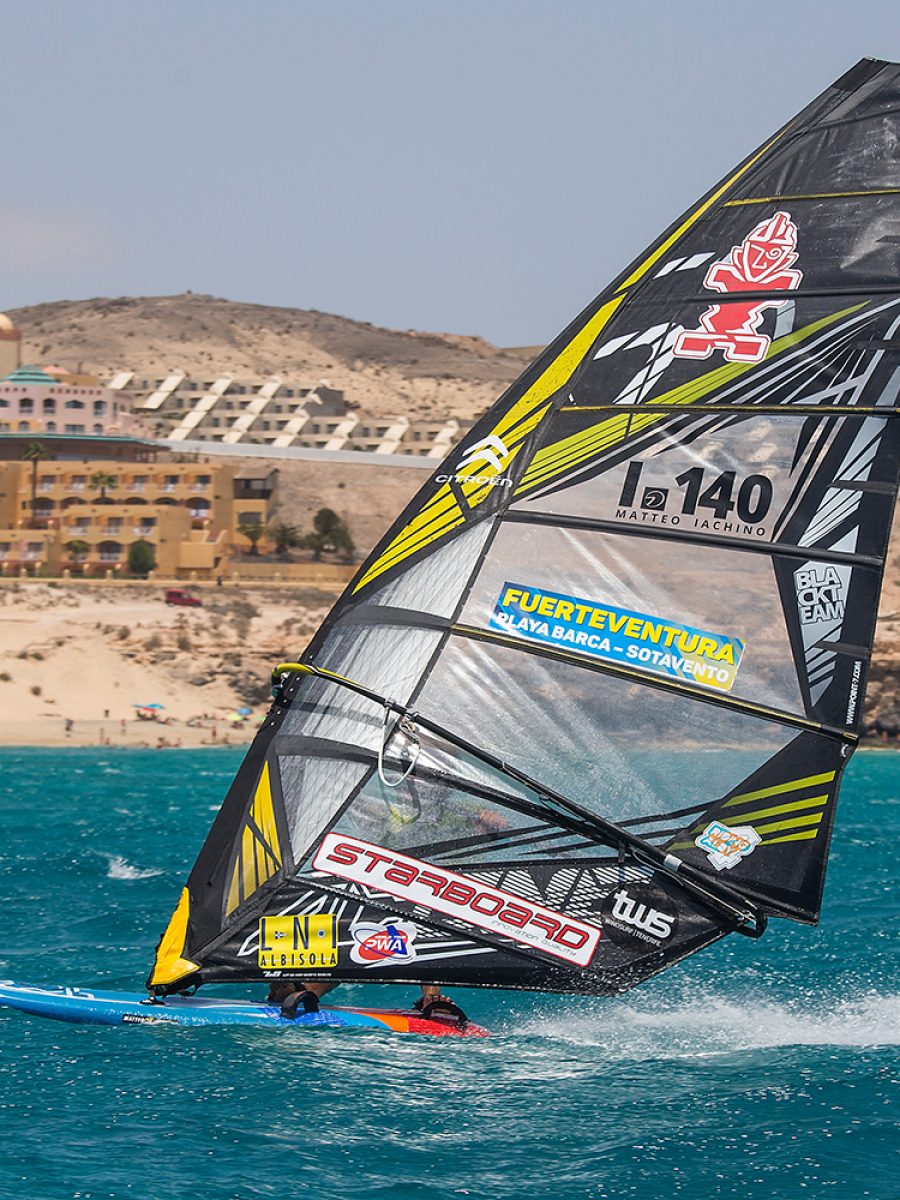
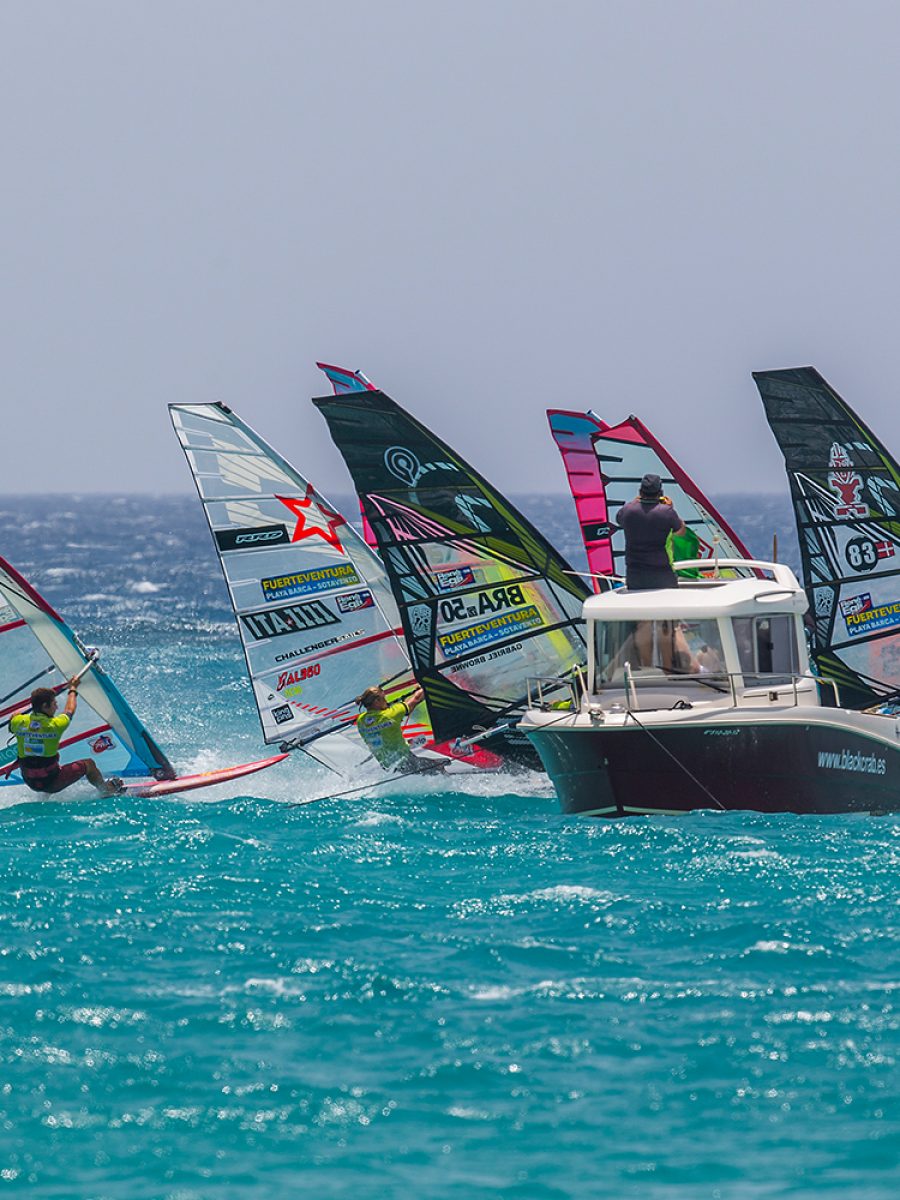
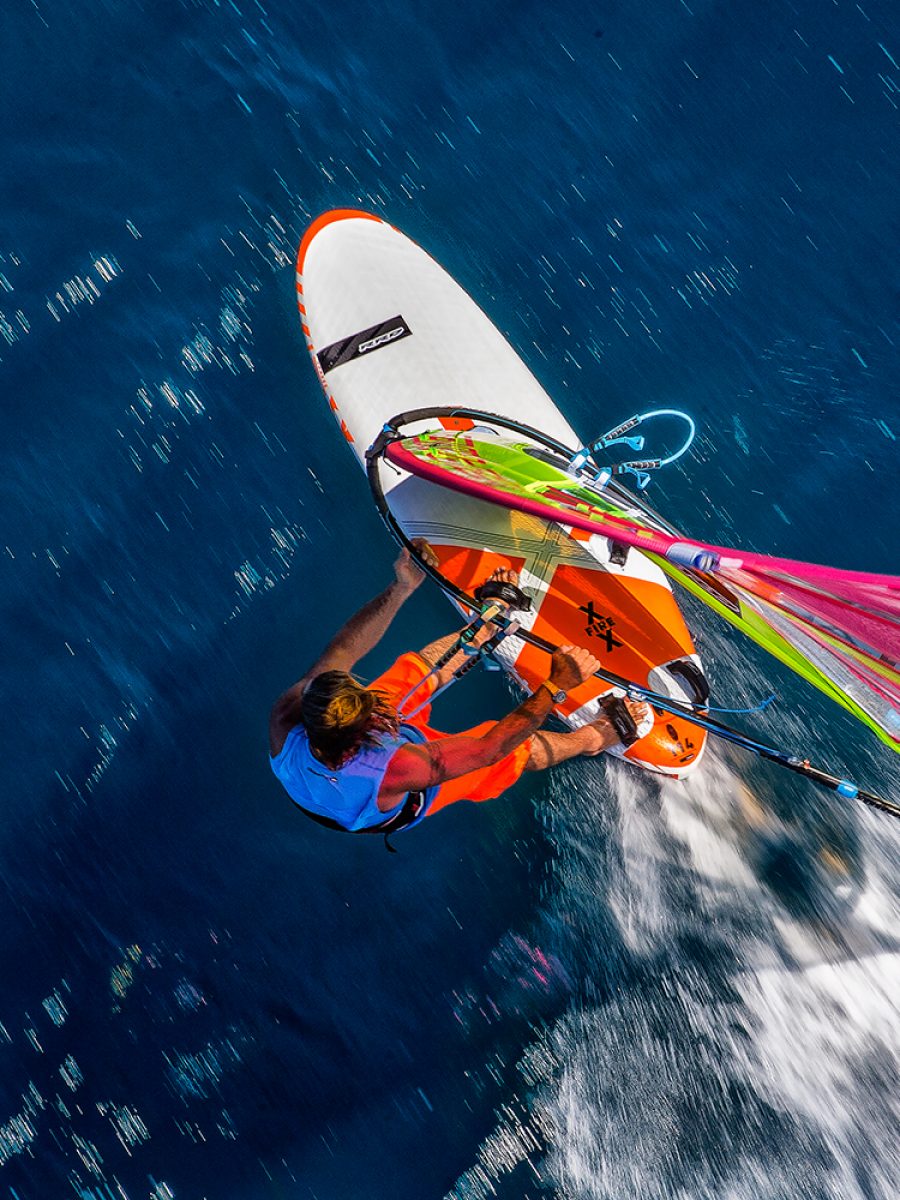
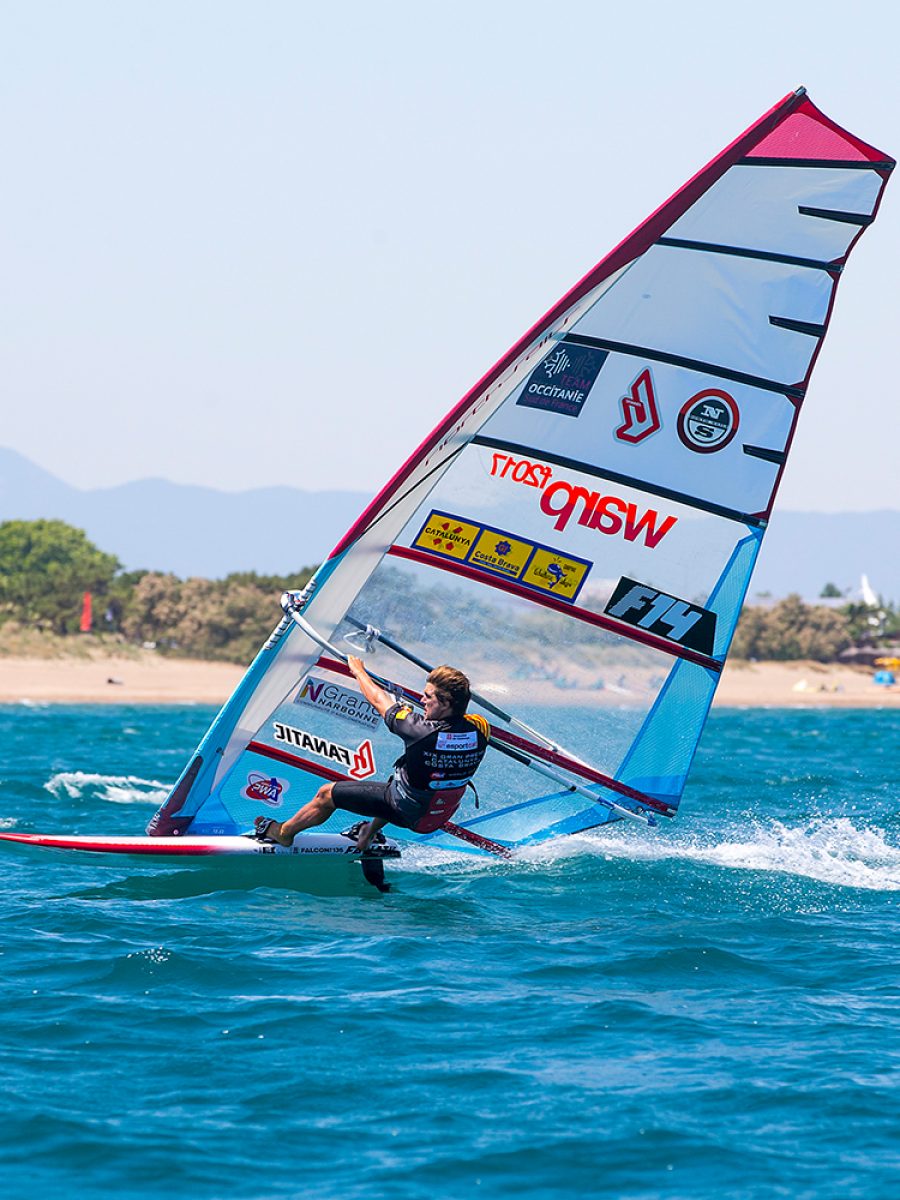
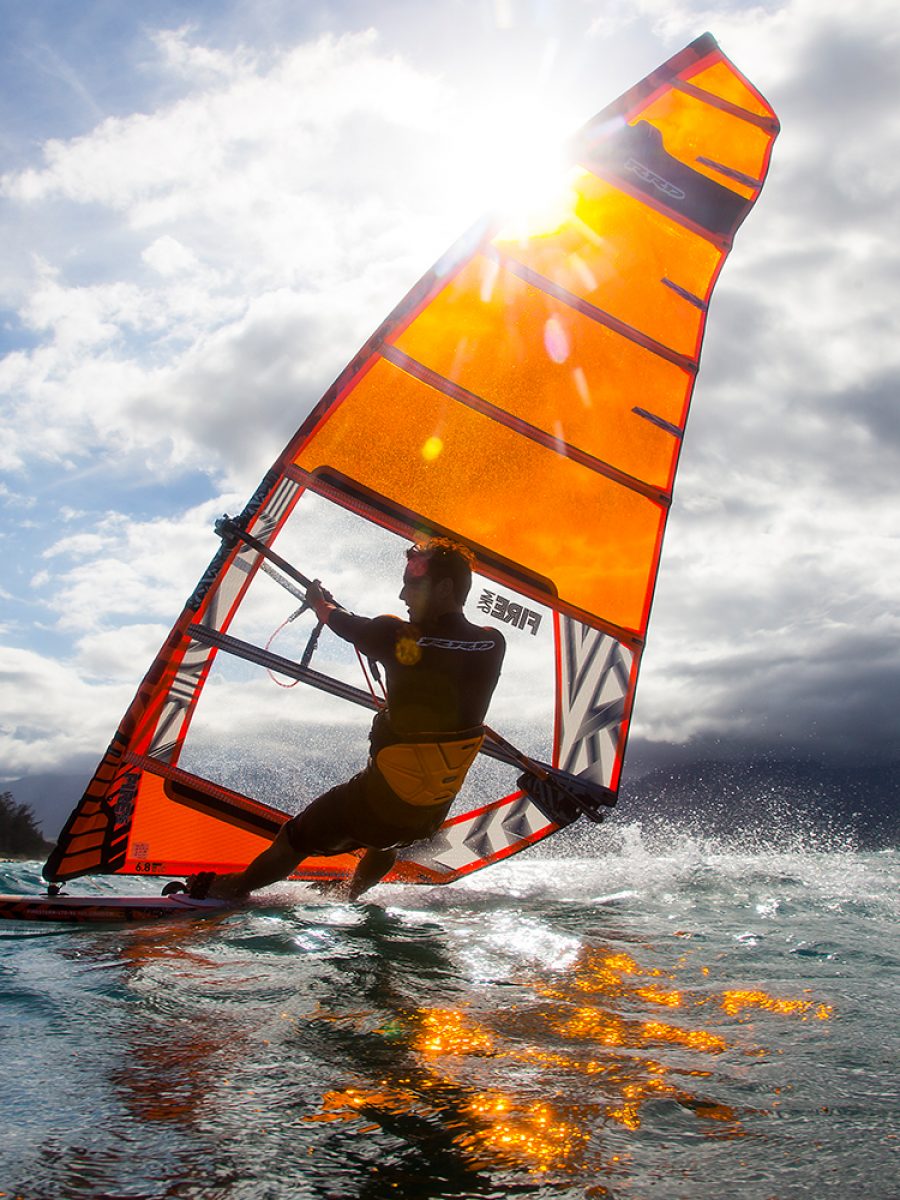
The post SLALOM – STARTLINE appeared first on Windsurf Magazine.